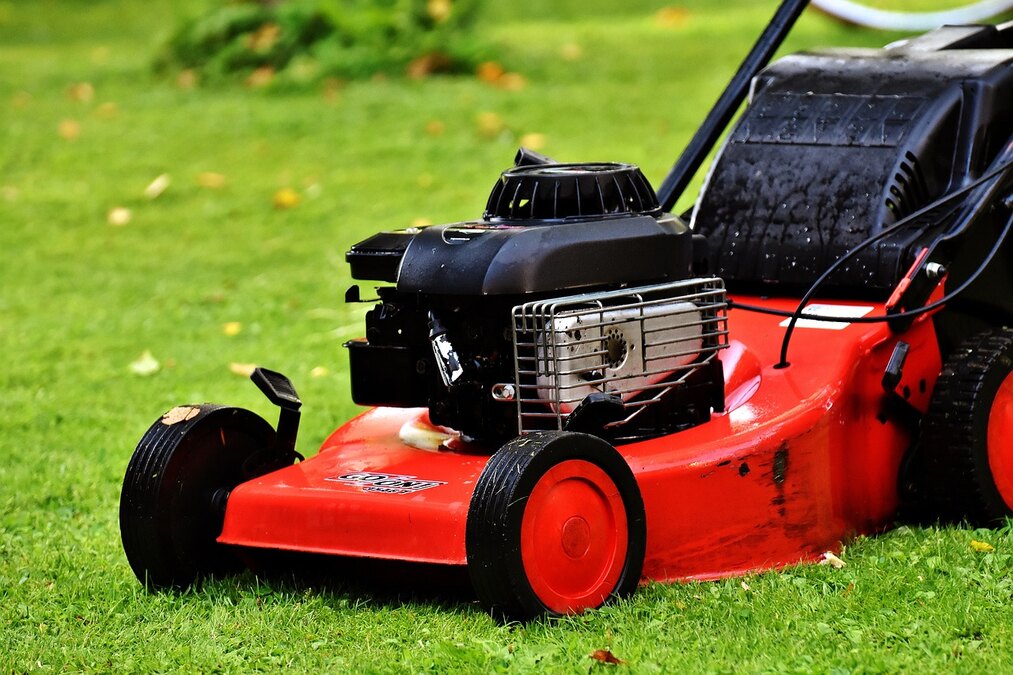Keeping your lawn lush and green involves more than just regular mowing—fertilization plays a vital role in achieving that vibrant, healthy lawn.
If you're wondering about the best time to fertilize lawn before or after mowing, you've come to the right place.
In this article, we'll dive deeper into the ideal time to fertilize your lawn, as well as provide tips on how to mow your lawn and select the right fertilizer. So, if you're ready to transform your lawn into a green paradise, continue reading.
As lawn care experts, we promise you'll walk away with all the knowledge needed to maintain a beautiful lawn that will be the envy of your neighborhood.
What this article covers:- Can I Mow and Fertilize on the Same Day?
- Tips for Mowing Your Lawn
- When to Mow and Fertilize
- Should You Aerate Your Lawn Before Fertilizing It?
- How Often Can You Fertilize Your Lawn?
Can I Mow and Fertilize on the Same Day?
Absolutely! It’s best to mow the lawn first. Make sure there are not any heavy clippings left behind because they can cause damage to the lawn and also prevent the fertilizer granules from entering the soil.
After mowing, it is perfectly safe to apply our granular fertilizer. After the fertilizer is applied, it is important to blow off all hard surfaces to prevent any staining from the granules.

However, it's best to wait at least 24 hours to a few days after mowing to fertilize your lawn to allow the grass to recover and avoid unnecessary stress. Spacing out these tasks will help maintain a healthier lawn.
At Lawn Synergy, we're proud to present our curated lawn fertilizer collection, designed to cater to all your lawn care needs. From seasonal blends to specialized formulations, Lawn Synergy offers a range of products to keep your lawn looking its best.
Explore our selection and find the perfect fertilizer to complement your lawn care routine.
Tips tor Mowing Your Lawn
Proper mowing sets the stage for effective fertilization. Here are some essential tips:
- Keep your mower blades sharp: Sharp blades make cleaner cuts, reducing stress on the grass and promoting healthier growth.
- Avoid cutting more than one-third of the grass height: Cutting too much at once can shock the grass, making it more susceptible to disease and stress.
- Mow as needed: Your lawn will grow faster at certain times of the year. It is important to keep it mowed more often if it is needed and that may include 2+ times per week.
- Mow in different patterns: Changing your mowing pattern each time prevents soil compaction and promotes even grass growth.

When to Mow and Fertilize
Understanding the timing is essential. Here's what we recommend:
Mow Your Lawn A Few Days Before Fertilizing
As per our expertise, mowing your lawn a few days before fertilizing allows the grass to recover. Freshly cut grass can more effectively absorb nutrients, ensuring you get the most out of your fertilizer application.
This practice prepares the grass blades to better uptake the essential nutrients, resulting in a healthier and more vibrant lawn.
By mowing a few days prior, you also remove any debris that could block the fertilizer from reaching the soil.
Do Not Mow Right After Fertilization
After fertilizing, give your lawn some time to absorb the nutrients. Mowing immediately afterward can disturb the fertilizer and hinder its effectiveness. Based on our observations, waiting at least until it is watered in is ideal.
This waiting period allows the fertilizer to settle and penetrate the soil, providing your grass with the best possible conditions to absorb the nutrients fully.
Should You Aerate Your Lawn Before Fertilizing It?
Aeration can significantly enhance the effectiveness of fertilization. Aerating before applying the best lawn fertilizer after aeration helps the nutrients penetrate deeper into the soil.
When aerating, you are opening up the soil allowing these nutrients to settle in. It’s also the perfect time to apply any soil conditioners such as Carbon Pro G, BioBoost, Gypsum, and Lime.
With its unique formulation of 20% iron and micronutrients, NutriGreen delivers a powerful boost of essential minerals and trace elements that promote robust root development, improve plant health, and enhance the overall appearance of your lawn.
This practice promotes robust root growth and improves overall lawn health.

How Often Can You Fertilize Your Lawn?
Frequency matters. Generally, fertilizing every 4-6 weeks during the growing season is sufficient. This schedule ensures that your lawn receives consistent nutrients to stay healthy and vibrant throughout the year.
How often you should be fertilizing your lawn can also depend on the length of the season for your area and the type of fertilizer used in these seasons.
For instance, using the best lawn fertilizer for spring should be done early in the growing season. Similarly, the best lawn fertilizer for winter prepares your lawn for the cold months ahead. For both seasons, we would recommend using the Almighty 20-0-10 Lawn Fertilizer for cool season lawns.
We have a better solution so that you do not have to try and figure out what fertilizer you need and when you need it. Our Lawn Fertilizer Subscription Program makes it easier with ongoing shipments. With our subscription service, you’ll receive the correct fertilizer for your lawn type exactly when your lawn needs it.
Conclusion
Achieving a lush, green lawn isn't just about regular mowing; it's about perfect timing. If you're wondering about the best time to fertilize a lawn before or after mowing, you've found the answer here.
At Lawn Synergy, we understand the science behind a perfect lawn. Our expert tips and high-quality products are designed to help you achieve and maintain the lush, green lawn you've always dreamed of.
Ready to elevate your lawn care game? Explore our range of premium fertilizers and lawn care products today. Trust Lawn Synergy to be your partner in creating the best lawn in the neighborhood!
If you want to learn more, why not check out these articles below:
- Best Time to Fertilize Lawn Before or After Rain
- Best Time of Day to Fertilize Lawn
- Best Weed and Feed for Bermuda Grass
- Best Fertilizer for Yellow Grass
- Best Fertilizer for Bahia Grass
- Best Fertilizer for Tall Fescue Grass
- Best Weed and Feed for St. Augustine Grass
- Best Fertilizer for Centipede Grass in South Carolina
- Best Grass Seed Fertilizer
- Best Fertilizer for Mondo Grass
- Best New Lawn Fertilizer
- Best Organic Fertilizer for Lawn
- Best Weed and Feed for Lawns
- Best Lawn Fertilizer for Texas
- Best Lawn Fertilizer for Florida

